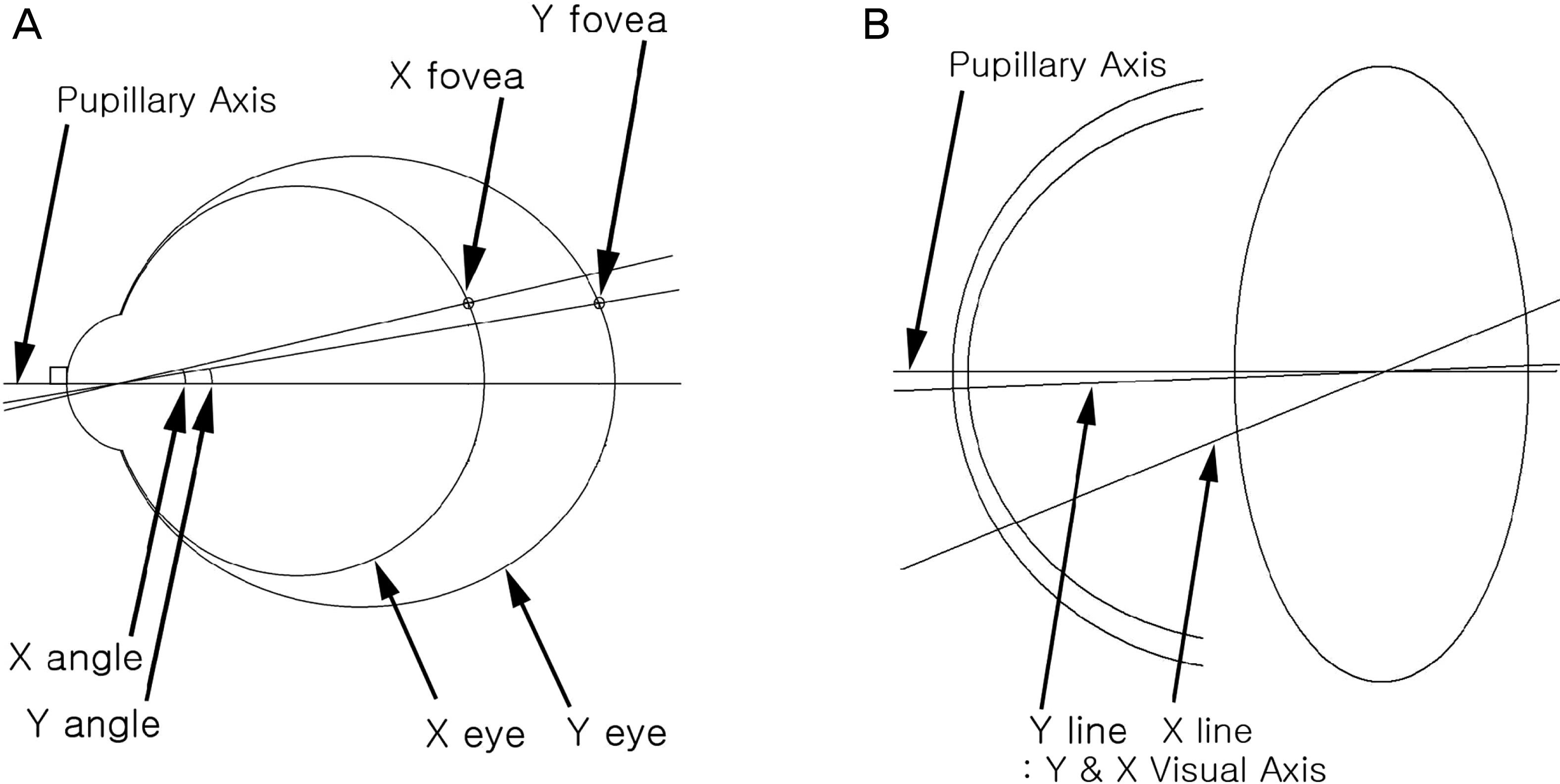J Korean Ophthalmol Soc.
2015 Apr;56(4):494-498. 10.3341/jkos.2015.56.4.494.
The Angle Kappa in Dominant and Non-Dominant Eye
- Affiliations
-
- 1Department of Ophthalmology, Dankook University College of Medicine, Cheonan, Korea. perfectcure@hanmail.net
- KMID: 2215698
- DOI: http://doi.org/10.3341/jkos.2015.56.4.494
Abstract
- PURPOSE
To evaluate differences between dominant and non-dominant eyes by analyzing angle kappa in dominant and non-dominant eyes.
METHODS
Fifty-seven subjects who had best corrected visual acuity 20/20 in the better-seeing eye and no underlying ocular disease were recruited. Ocular dominance was determined using the hole-in-the-card test. Corneal topography, refractive error, intraocular pressure (IOP), and axial length were evaluated in both eyes.
RESULTS
On corneal topography examination, the angle kappa and white-to-white measurements were significantly smaller in the dominant eye than the non-dominant eye (p = 0.013 and p = 0.045, respectively). However, no significant differences in sim K's' astigmatism (p = 0.210), central corneal thickness (p = 0.533), and anterior chamber depth (p = 0.216) were observed. In addition, cylindrical powers of the subjects measured by autorefraction (AR) were significantly lower in the dominant eye (p = 0.026); however no differences in spherical equivalent measured by AR (p = 0.061), IOP measured using pneumonic tonometer (p = 0.536), or axial length measured using laser biometry (p = 0.093) were observed.
CONCLUSIONS
In this study, we found the angle kappa a new factor in determining the dominant and non-dominant eye. Difference in axial length and spherical equivalent between dominant and non-dominant eye may be associated with the difference in angle kappa.
MeSH Terms
Figure
Reference
-
References
1. Ko CJ, Choi JS. A study on dominant eye. J Korean Ophthalmol Soc. 1983; 24:459–62.2. Mapp AP, Ono H, Barbeito R. What does the dominant eye domi-nate? A brief and somewhat contentious review. Percept Psychophys. 2003; 65:310–7.
Article3. Cho KJ, Kim SY, Yang SW. The refractive errors of dominant and non-dominant eyes. J Korean Ophthalmol Soc. 2009; 50:275–9.
Article4. Cheng CY, Yen MY, Lin HY, et al. Association of ocular dominance and anisometropic myopia. Invest Ophthalmol Vis Sci. 2004; 45:2856–60.
Article5. Chia A, Jaurigue A, Gazzard G, et al. Ocular dominance, laterality, and refraction in Singaporean children. Invest Ophthalmol Vis Sci. 2007; 48:3533–6.
Article6. Samarawickrama C, Wang JJ, Huynh SC, et al. Macular thickness, retinal thickness, and optic disk parameters in dominant compared with nondominant eyes. J AAPOS. 2009; 13:142–7.
Article7. Dane S, Gümüştekin K, Yazici AT, Baykal O. Correlation between hand preference and intraocular pressure from right- and left-eyes in right- and left-handers. Vision Res. 2003; 43:405–8.
Article8. Linke SJ, Baviera J, Munzer G, et al. Association between ocular dominance and spherical/astigmatic anisometropia, age, and sex: analysis of 10,264 myopic individuals. Invest Ophthalmol Vis Sci. 2011; 52:9166–73.
Article9. Koran Association of Pediatric Ophthalmology and Strabismus. Current concepts in strabismus. 3rd ed. Korea: Naewae haksool;2013; chap. 9. 146–64.10. Basmak H, Sahin A, Yildirim N, et al. Measurement of angle kappa with synoptophore and Orbscan II in a normal population. J Refract Surg. 2007; 23:456–60.
Article
- Full Text Links
- Actions
-
Cited
- CITED
-
- Close
- Share
- Similar articles
-
- The Refractive Errors of Dominant and Non-dominant Eyes
- Measurement of Angle Kappa Using Ultrasound Biomicroscopy and Corneal Topography
- Relationship among Dominant Eye & Hand and Deviated Eye under General Anesthesia
- The Relationship of Dominant Eye, Dominant Hand, and Deviated Eye in Strabismus
- Retinal Nerve Fiber Layer Thickness and Optic Disc Parameters in Dominant Compared with Non-Dominant Eyes


